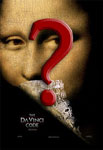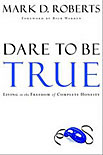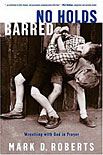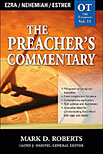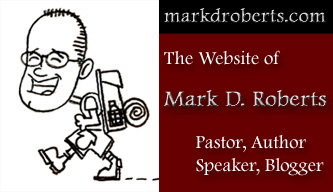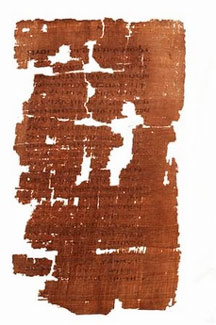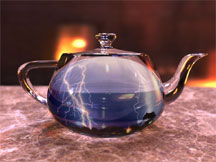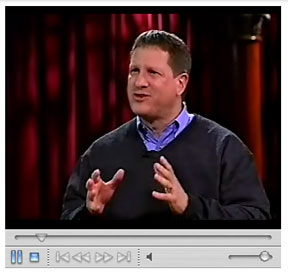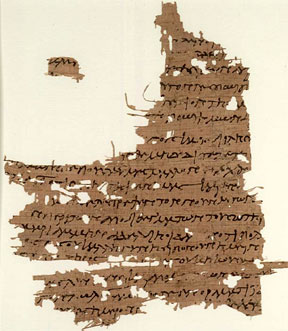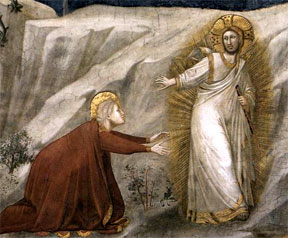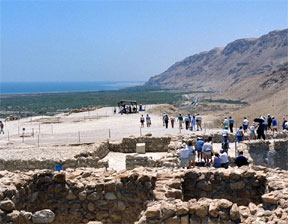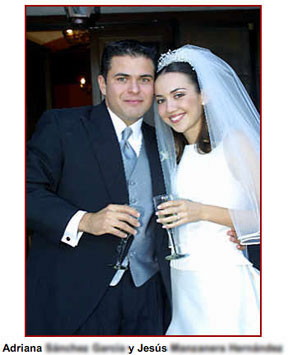| |
A Resource by Mark D. Roberts |
|
The Da Vinci Opportunity, Section 3
How the Popularity of The Da Vinci Code Book
and Movie Can Be Helpful to Christians and Others
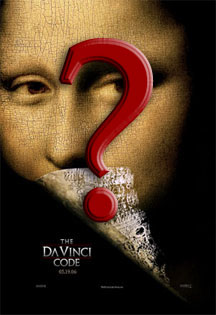
by Rev. Dr. Mark D. Roberts
Copyright © 2006 by Mark D. Roberts
Note: You may download this resource at no cost, for personal use or for use in a Christian ministry, as long as you are not publishing it for sale. All I ask is that you give credit where credit is due. For all other uses, please contact me at mark@markdroberts.com. Thank you.
Excursus: The Gospel of Judas -- A Special Report 
Part 21 of series: The Da Vinci Opportunity 
Posted for Sunday, April 9, 2006
| I'm writing this special report to try and provide a sane and helpful response to the furor over the recent release of the Gospel of Judas. No doubt this furor will grow in the next few days in light of the National Geographic television special on the Gospel of Judas, that airs tomorrow evening (Sunday, April 9, 2006, at 9 p.m.) My intent is to answer a few basic questions about this "gospel" and its significance. |
|
| FAQ: What about the newly published Gospel of Judas? Is it relevant to the discussion of The Da Vinci Code? Does it undermine the reliability of the New Testament gospels? |
|
A Fantastic Resource
I should say up front that I have not seen the television special, since I don't have the ability to travel forward in time. But the National Geographic Society has put up a couple of highly informative and wonderfully designed websites, with lots of material on both the Gospel of Judas and the television special. Although the National Geographic Society has taken some deserved heat for keeping the contents of the Gospel of Judas secret for too long – no doubt for economic reasons – the Society has now made lots of information available through its websites.
I consider the website that focuses on the document itself, rather than the television program, to be a fantastic resource. From this site I have been able to read the Gospel of Judas in English translation (available in PDF format from this link), to look at the Coptic text, and even the actual manuscripts. I know of no other resource that makes the actual study of ancient texts more available to the average person. Thus, regardless of the value of the Gospel of Judas itself, the National Geographic Society has created a marvelous resource for people interested in the study of ancient history in general, and Christianity in particular.
What is The Gospel of Judas?
The Gospel of Judas is a portion of a centuries-old codex (book) written in Coptic (an ancient Egyptian language). Included in this codex are other documents known to be Gnostic. This suggests that the contents of the Gospel of Judas may well be Gnostic, an assumption confirmed by the evidence of the text.
The Gospel of Judas does not claim to be a firsthand account by Judas. He is not the narrator, but a chief participant, along with Jesus. The other disciples appear in this gospel. They are insignificant and in fact condemned by Jesus Himself.
The Gospel of Judas, in an earlier form than we have it now, was known among second-century orthodox Christians. Irenaeus of Lyons, who wrote an influential refutation of what he considered to be heretical Christian ideas, said this in Against Heresies i.31.1: |
|
| |
One page from the Gospel of Judas |
Others again declare that Cain derived his being from the Power above, and acknowledge that Esau, Korah, the Sodomites, and all such persons, are related to themselves. On this account, they add, they have been assailed by the Creator, yet no one of them has suffered injury. For Sophia was in the habit of carrying off that which belonged to her from them to herself. They declare that Judas the traitor was thoroughly acquainted with these things, and that he alone, knowing the truth as no others did, accomplished the mystery of the betrayal; by him all things, both earthly and heavenly, were thus thrown into confusion. They produce a fictitious history of this kind, which they style the Gospel of Judas.
It seems likely that the Irenaeus describes a document close in content to the one we have. This may mean that the Gospel of Judas was written no later than the late second century A.D.
What Can We Learn from the Gospel of Judas?
The Gospel of Judas fills in a blank in our understanding of second-century (and later) Christian Gnosticism. It confirms, once again, the basic reliability of Irenaeus, though he wrote to oppose Gnosticism. But, more importantly, it gives us first-hand knowledge of what some Gnostic Christians who identified with Judas actually believed. This is very helpful to scholars of early Christianity, who rarely get to examine newly discovered primary documents. (I should note that some scholars still doubt the authenticity of the Gospel of Judas. But I expect this doubt will soon subside.)
Of course knowledge of second-century Christian Gnosticism matters to academics who care about such things, but it scarcely makes headlines. Yet the release of the Gospel of Judas has, indeed, made the first page of many leading newspapers. Why? Because some have suggested that the Gospel of Judas provides access to new historical data about Judas, and, more importantly, about Jesus Himself.
Does the Gospel of Judas Give Us New Information about the Historical Judas and the Historical Jesus?
The National Geographic website makes this claim:
The Gospel of Judas gives a different view of the relationship between Jesus and Judas, offering new insights into the disciple who betrayed Jesus. Unlike the accounts in the canonical Gospels of Matthew, Mark, Luke, and John, in which Judas is portrayed as a reviled traitor, this newly discovered Gospel portrays Judas as acting at Jesus' request when he hands Jesus over to the authorities.
This is skating on thin ice. Surely the Gospel of Judas offers a different view of the relationship between Jesus and Judas, but I seriously doubt whether it offers "new insights into the disciple who betrayed Jesus." It does indeed show us what some Gnostics, writing a century after Judas's death, thought of him. But it's highly unlikely that the Gospel of Judas tells us anything about the actual Judas, or the actual Jesus, for that matter. (I'll provide some textual evidence for this a little later.)
This is the perspective of James M. Robinson, one of the world's leading scholars on Gnosticism, and the editor of the Nag Hammadi Library. In an AP story, Robinson said, bluntly: "Does it go back to Judas? No." Expanding on this point, the AP story continues:
[Robinson] says the text is valuable to scholars of the second century but dismissed the notion that it'll reveal unknown biblical secrets. . . . "There are a lot of second-, third- and fourth-century gospels attributed to various apostles," Robinson said. "We don't really assume they give us any first—century information."
What Do We Find in the Gospel of Judas?
I've read through the Gospel of Judas twice, thanks to the National Geographic Society's PDF download. As a part-time scholar of early Christianity, I find it fascinating. (If you're not familiar with me, let me say that I'm a full-time pastor and a part-time professor of New Testament with a Ph.D. in New Testament from Harvard, where I studied Gnosticism in depth.) A few things in the Gospel of Judas surprised me, notably the reference to Jesus's miracles, which rarely if ever get mentioned in Gnostic "gospels." I was also intrigued by the extent to which the Jesus of the Gospel of Judas denounces the other disciples as followers of the wrong god (34). Only Judas understood truly which God Jesus represented:
"I know who you are and where you have come from. You are from the immortal realm of Barbelo. And I am not worthy to utter the name of the one who has sent you." (35)
Barbelo, by the way, shows up commonly in the list of Gnostic gods. Because of Judas's unique knowledge of Jesus identity and origin (common Gnostic themes), Jesus promises to reveal to him "the mysteries of the kingdom" (35)
These mysteries have largely to do with the origin of the universe, and they are commonly found in Gnostic treatises from Nag Hammadi. (If you want to read the whole of the revelation in the Gospel of Judas, see pages 47-52). I'll reproduce the last part of this revelation so you can get a taste of what it's like. Notice where "Christ" appears and who He is.
“The multitude of those immortals is called the cosmos— that is, perdition—by the Father and the seventy-two luminaries who are with the Self-Generated and his seventy-two aeons. In him the first human appeared with his incorruptible powers. And the aeon that appeared with his generation, the aeon in whom are the cloud of knowledge and the angel, is called [51] El. [...] aeon [...] after that [...] said, ‘Let twelve angels come into being [to] rule over chaos and the [underworld].’ And look, from the cloud there appeared an [angel] whose face flashed with fire and whose appearance was defiled with blood. His name was Nebro, which means ‘rebel’; others call him Yaldabaoth. Another angel, Saklas, also came from the cloud. So Nebro created six angels—as well as Saklas—to be assistants, and these produced twelve angels in the heavens, with each one receiving a portion in the heavens."
“The twelve rulers spoke with the twelve angels: ‘Let each of you [52] [...] and let them[...] generation [—one line lost—] angels’: The first is [S]eth, who is called Christ. The [second] is Harmathoth, who is [...].The [third] is Galila. The fourth is Yobel. The fifth [is] Adonaios. These are the five who ruled over the underworld, and first of all over chaos."
This is the sort of truth that Jesus reveals to the privileged Judas, who alone receives saving knowledge, and who alone would rule over future generations (46).
The Gospel of Judas is typical of many Gnostic writings, with its notions that salvation comes through the knowledge of one's divine origin, that salvation is exclusive and offered only to the elite, that the majority of Christians are caught in error and serving the wrong God, that physical existence is bad and needs to be transcended, and that Jesus was a revealer of esoteric truths that bear almost no resemblance to anything a first-century Jewish prophet would have thought or said.
Why is Judas Special According to the Gospel of Judas?
We might wonder why the writer of the Gospel of Judas would have considered Judas to be so special. Other Gnostic documents give priority to Thomas, Mary, John, or James. So why Judas?
A clue is to be found in the line of the document that is getting the most press. In this line Jesus says to Judas: "But you will exceed all of them. For you will sacrifice the man that clothes me" (56). Gaps in the manuscript don't allow us to identify precisely those whom Judas exceeds (the other disciples? the generations? angels?). Yet it is clear that Judas is special because he will be the one to "sacrifice the man that clothes me." His action will insure the death of the physical body associated with Jesus. Note: in typical Gnostic fashion, Jesus is not identified with His body. Rather, He dwells within this body, and will be happy when He is set free from it. This Gnostic devaluation of the body is both central to Gnostic theology and is in polar opposition to the world-affirming theology of Judaism, Jesus, and orthodox Christianity.
Second-century Gnostic Christians were accomplished at taking biblical stories, either from the New Testament or from the Old, and turning them on their heads. For example, in Gnostic stories of creation the world and humankind are created by an evil god. But the good serpent comes to reveal knowledge to people so they can escape the evil creation. This is Genesis turned on its head. Similarly, a creative Gnostic writer refashioned the New Testament story of Judas, making him the hero because he was responsible for the death of the (bad) body of Jesus. Along the way, this Gnostic author was also able to denigrate the other disciples of Jesus, those upon which orthodox Christianity based its doctrine and authority. Holding up the reconfigured Judas, therefore, plays perfectly into the Gnostic agenda.
Does the Gospel of Judas Make a Difference for Ordinary Christians?
The Gospel of Judas itself has nothing to offer to ordinary Christians, except that it fills in a tiny blank on the map of Christian history. But it offers no new insights into the historical Jesus, nothing for people of orthodox Christian faith.
| The furor of the Gospel of Judas will be hot and heavy for a few days, and then it will die out. During this time certain scholars and pseudo-scholars will suggest that, somehow, the Gospel of Judas gives us new insight in the real Judas and Jesus, and that somehow this calls into question orthodox Christianity. In my opinion, such people have been spending too much time reading the books of Sir Leigh Teabing. If you don't believe me, consider the position of James Robinson, whom I cited earlier as one of the world's leading experts on Gnosticism, and someone who isn't known for his evangelical Christian faith. Here are a couple of paragraphs from a Boston Globe article: |
|
| |
Alas, the Gospel of Judas is, in the end, a tempest in a teapot. |
Robinson said in a telephone interview yesterday that he is convinced the document is not a forgery. But he also disputed assertions that it provides new information about what happened on Maundy Thursday, Good Friday, or Easter.
Participants in the National Geographic effort ''are making the sly suggestion that the Gospel of Judas is more or less equally valid" with the gospels of the New Testament and ''contains things that could pull the rug out from under Christianity as we know it," said Robinson. ''That is just ridiculous."
If you actually read the Gospel of Judas, rather than paying attention to secondhand observations about it, you'll agree with Robinson.
Why is All of This Happening Right Now?
You may wonder why the National Geographic Society has waited to this moment to release the document and to air the television program. James Robinson offers what I believe to be a telling insight. In the AP story I mentioned earlier, Robinson " speculated the timing of the release is aimed at capitalizing on interest in the film version of "The Da Vinci Code" — a fictional tale that centers on a Christian conspiracy to cover up a marriage between Jesus and Mary Magdalene." There's no question in my mind that this is part of what lies behind the timing of the release of the Gospel of Judas and the related television program. This is good marketing.
Yet, why televise a documentary that focuses on Gnostic Christianity and, in the opinion of some people, undermines orthodox Christian faith, on the first day of Holy Week? Why sow seeds of doubt about the veracity of the biblical narratives in a week when these narratives are most precious to Christians? You understand that I don't believe there is any reason to believe that the Gospel of Judas has anything to say about what actually happened during Jesus's last days. So I don't think of it as necessarily sowing seeds of doubt. But some of the scholars speaking on behalf of the National Geographic Society are sowing these seeds. Why?
Well, it's not the first time that the secular media has used the occasion of Holy Week to release information that seems to undermine orthodox faith in Jesus. Years ago you could always count on Jesus Seminar headlines in the week before Easter. "Brilliant Scholars Deny Fact of Resurrection" would run on the Saturday before Easter, just to encourage the faithful, I suppose. Some media critics see these actions as a plot against orthodox Christianity, and I expect there may be some in the secular media who would love to knock Christianity down a few pegs. But I believe that many others simply think of Holy Week as an opportune time to put out controversial material about Jesus. Interest will be sky high, both from promoters and from critics. Apart from any anti-Christian agenda, a Holy Week release sells ads, books (of which the National Geographic Society is selling two), and DVDs. If you don't mind offending a few Christians, then Holy Week is the best time of year for such revelations.
Does the Gospel of Judas Give Us a More Human Jesus?
If you've been reading my series on The Da Vinci Code, you know that I've been critiquing the view of the fictional Sir Leigh Teabing that the Gnostic gospels give us a more human Jesus. So what about the Gospel of Judas? Do we find a more human Jesus here?
A Boston Globe article on the gospel and its controversy ends this way:
Haley Robinson, a Methodist studying for a master's degree in divinity at BU, said it helps her to read documents like the Gospel of Judas that make Jesus more accessible.
''It strengthens my faith to see Jesus portrayed as more human than he is in the gospels," she said. ''It makes it lots easier for me to connect to him."
Ah, Ms. Robinson must be a disciple of Leigh Teabing!
I'll bet you a hundred dollars that Ms. Robinson had not read the Gospel of Judas before she said this. I don't see how anybody could read this document, with its esoteric Gnostic revelations, with its devaluing of the body, and with its absence of genuine human warmth, and say that the Jesus of the Gospel of Judas is more human than the Jesus of the biblical gospels. There's no question whatsoever that the Jesus of the Gospel of Judas is less human. Judas is the good guy because his action in handing Jesus over leads to the death of the body of Jesus, that which only "clothes" the real Jesus.
If you think I'm being unfair, either in my reaction to Ms. Robinson, or in my evaluation of the Gospel of Judas, then I'd urge you to read the gospel itself. As I've said before, nothing cures a naïve affection for Gnosticism more than actually reading Gnostic works. Once again, you can download the Gospel of Judas in translation from this page.
Opportunity #2: The Engagingly Human Jesus of the Biblical Gospels (Section C) 
Part 22 of series: The Da Vinci Opportunity 
Posted for Tuesday, May 2, 2006
It's been almost a month since my last post in this series. In that post I was explaining that the Jesus of the biblical gospels is far more engagingly human than the "Christ" or "Savior" of the Gnostic gospels. The claim of The Da Vinci Code that the non-canonical gospels reveal a more human Jesus is one of the more creatively fictional inventions of Dan Brown's fertile mind. (I'm not going to repeat the argument of my last post here, so if you want to see the evidence, check out that post.)
Before I leave this discussion, however, I want to add some comments about one of the scenes in the biblical gospels that portrays Jesus in His utter humanness. This is one of the most moving and in some ways shocking depictions of Jesus in the New Testament. I'm talking about what happened in the Garden of Gethsemane.
Here is the story as it appears in the Gospel of Mark:
| They went to a place called Gethsemane; and he said to his disciples, “Sit here while I pray.” He took with him Peter and James and John, and began to be distressed and agitated. And said to them, “I am deeply grieved, even to death; remain here, and keep awake.” And going a little farther, he threw himself on the ground and prayed that, if it were possible, the hour might pass from him. He said, “Abba, Father, for you all things are possible; remove this cup from me; yet, not what I want, but what you want.” He came and found them sleeping; and he said to Peter, “Simon, are you asleep? Could you not keep awake one hour? Keep awake and pray that you may not come into the time of trial; the spirit indeed is willing, but the flesh is weak.” And again he went away and prayed, saying the same words. And once more he came and found them sleeping, for their eyes were very heavy; and they did not know what to say to him. He came a third time and said to them, “Are you still sleeping and taking your rest? Enough! The hour has come; the Son of Man is betrayed into the hands of sinners. Get up, let us be going. See, my betrayer is at hand.” |
|
| |
Jesus in Gethsemane, from The Passion of the Christ
|
If this is not an engaging picture of the human Jesus, I don't know what is. First of all, Jesus is "distressed and agitated" (14:33). So heavy is His sadness that He says, "I am deeply grieved, even to death" (14:34). Then Jesus prays "that the hour might pass from him" and that God might "remove this cup from" Him (14:35-36). Jesus is actually asking to be freed from His calling to be crucified. In the end He submits to God's will and chooses the cross. But in the garden Jesus seeks another way. What an astounding picture of Jesus's wrestling with God! He's not some superhuman automaton who approaches the cross with otherworldly assurance. Rather, even though God in the flesh, Jesus is a true human being who, like all true human beings, finds God's will to be difficult, and even tries to get out of it. Though I've never faced anything like the cross, I can relate to this Jesus. He knows my struggles.
I want to add that the inclusion of this scene from the Garden of Gethsemane in the gospels (it appears in Matthew, Mark, and Luke) testifies to the historical reliability of the biblical gospels. By the time that Christians were collecting Matthew, Mark, Luke, and John, in the mid-second century A.D., they believed Jesus to be divine. Yet they did not edit out Gethsemane, even though it shows Jesus to be, not only distressed, agitated, and grieved, but even trying to get out of dying on the cross. Surely this creates a measure of uneasiness for anyone who believes that Jesus is God the Son, the One who will be identified as the second member of the Trinity. Taking this scene out of the gospels makes Jesus appear consistently resolute in his plan to die on the cross, and it also helps the disciples to look better as well. Delete Gethsemane and you have a less human Jesus and a less embarrassing bunch of core disciples. Yet the orthodox Christians did not remove this scene. Their commitment to the truth allows us to see Jesus "behind the curtain," as it were, in a time of deep distress and vocational reticence.
Opportunity #3: The Inclusiveness of Orthodox Christianity vs. Gnostic Christianity (Section A) 
Part 23 of series: The Da Vinci Opportunity 
Posted for Wednesday, May 3, 2006
Since The Da Vinci Code doesn't have much to say about Gnosticism, I'll spend only two days on this point. But Dan Brown does appear to rise on the tide of popularized Gnosticism, especially in his fondness for non-canonical gospels and "heretical" Christianity (p. 234).
As I explained earlier in this series, Gnosticism has grown in popularity during the last thirty years. This has to do, in part, with the publishing of the Nag Hammadi documents. And it also has to do with the way in which some scholars have talked about Gnosticism, making it seem as if it is the spiritual mother of postmodernism. People who aren't happy with Christian orthodoxy because it has the gall to suggest that its truth is THE truth point to the alternative "Christian" truth found in Gnosticism. Those who are unhappy with the exclusiveness of Christianity, which calls people to believe certain things about Christ as Savior and Lord, see in Gnosticism the encouragement to be more diverse and inclusive.
The problem is that Christian Gnosticism was, for the most part, less inclusive than Christian orthodoxy. Gnostics didn't allow for a wide diversity of belief. In fact, they were quite critical of those who didn't have their gnosis (Greek for knowledge). And, though some Gnostics felt a calling to communicate their secrets to the world (see, for example, The Sophia of Jesus Christ, 118-119), most seemed to have little zeal for multiplying the number of those who would be saved through gnosis. |
|
| |
I became aware of a great website today, Lee Strobel.com. Lee, a bestselling author, has gathered some excellent material on The Da Vinci Code. In fact, he's got a question page that looks a lot like my FAQ. But Lee's material comes in video format, both online and for purchase. You can order his multimedia material here, or from his website. |
Consider the following passages from the Nag Hammadi Library, with my comments:
"But when I came, I opened the path, and I taught them about the passage which they will traverse, the elect and solitary, who have known the Father, having believed the truth and all the praises while you offered praise." (Dialogue of the Savior 120-121).
Comment: The Savior (who is not called Jesus in this document, by the way) opens the path only for the "elect and solitary, who have known the Father." This is indeed a narrow path.
Since you asked that I send you a secret book which was revealed to me and Peter by the Lord, I could not turn you away or gainsay (?) you; but I have written it in the Hebrew alphabet and sent it to you, and you alone. But since you are a minister of the salvation of the saints, endeavor earnestly and take care not to rehearse this text to many - this that the Savior did not wish to tell to all of us, his twelve disciples. But blessed will they be who will be saved through the faith of this discourse. (Apocryphon of James 1)
Comment: James received a "secret book" revealed only to him and Peter. This book is to be kept secret. Its truth is not to be shared with many people, since the Savior didn't even reveal this truth to His twelve disciples. Therefore, only a small number will be saved through believing in the secret revealed by the Savior.
These are the secret sayings which the living Jesus spoke and which Didymos Judas Thomas wrote down. (1) And he said, "Whoever finds the interpretation of these sayings will not experience death." (Gospel of Thomas)
Comment: Here again the emphasis is upon secrecy. Only the one who deciphers the secret sayings of Jesus will live.
"For many will accept our teaching in the beginning. And they will turn from them again by the will of the Father of their error, because they have done what he wanted. And he will reveal them in his judgment, i.e., the servants of the Word. But those who became mingled with these shall become their prisoners, since they are without perception. And the guileless, good, pure one they push to the worker of death, and to the kingdom of those who praise Christ in a restoration. And they praise the men of the propagation of falsehood, those who will come after you. And they will cleave to the name of a dead man, thinking that they will become pure. But they will become greatly defiled and they will fall into a name of error, and into the hand of an evil, cunning man and a manifold dogma, and they will be ruled heretically." (Apocalypse of Peter 73-74)
"For evil cannot produce good fruit. For the place from which each of them is produces that which is like itself; for not every soul is of the truth, nor of immortality. For every soul of these ages has death assigned to it in our view, because it is always a slave, since it is created for its desires and their eternal destruction, in which they are and from which they are." (Apocalypse of Peter 75)
Comment: In the first of these passages from the Apocalypse of Peter the Savior judges harshly those orthodox Christians are "without perception" and who "cleave to the name of a dead man," namely, "Jesus." The second passage reflects a typical Gnostic belief that only a few souls belong to truth and immortality. Most people were created (by a lesser, bad god) for "eternal destruction."
"And there shall be others of those who are outside our number who name themselves bishop and also deacons, as if they have received their authority from God. They bend themselves under the judgment of the leaders. Those people are dry canals." (Apocalypse of Peter 79)
Comment: To be sure, orthodox critics of Gnosticism weren't generous either. But it's worth noting that the Gnostics were not saying, "Well, we have our way of thinking about God, and the orthodox have their way, so let's live and let live. Can't we all get along?" On the contrary, they were as committed to one truth – the Gnostic truth – as the orthodox were committed to orthodox truth.
Tomorrow I'll contrast what we've seen in Gnosticism with parallel teachings from the New Testament.
Opportunity #3: The Inclusiveness of Orthodox Christianity vs. Gnostic Christianity (Section B) 
Part 24 of series: The Da Vinci Opportunity 
Posted for Thursday, May 4, 2006
As I explained yesterday, people who can't stomach the exclusiveness of Christianity – a belief in one God and in salvation only through Christ – have turned to Gnosticism for relief. Yet, as we have seen, Gnosticism is every bit as exclusive as orthodox Christianity, and arguably even more so. Gnostics were convinced that they, and they alone, had the secrets to salvation. And these secrets were not to be broadcast to the world. Rather, they were reserved for the few who could accept the knowledge of their own inner divinity.
Yesterday I put up several passages from Gnostic writings. These showed the secrecy and lack of inclusiveness in Gnosticism. Today I will add several quotations from the New Testament, with a few of my own comments.
Go therefore and make disciples of all nations, baptizing them in the name of the Father and of the Son and of the Holy Spirit, and teaching them to obey everything that I have commanded you. And remember, I am with you always, to the end of the age.” (Matthew 28:19-20)
Comment: This is a paradigmatic New Testament passage, one that illustrates the inclusiveness/exclusiveness of Christianity. It is exclusive in the sense that baptism is to happen only in the name of the Christian trio, and that people are to obey the teachings of Jesus in particular, not any guru one might choose. On the other hand, Christianity is inclusive in that people from "all nations" can become disciples of Jesus. Nobody is excluded from the offer of Christian discipleship.
For God so loved the world that he gave his only Son, so that everyone who believes in him may not perish but may have eternal life. (John 3:16)
Comment: Unlike the Gnostic deity, who didn't create the world and doesn't love it or its people, the Christian God cares for the whole world (meaning the people of the whole world). "Eternal life" is offered to "everyone." This is maximum inclusiveness. But, eternal life comes through believing in Jesus, the Son of God. Once again we have an inclusive/exclusive tension.
And I, when I am lifted up from the earth, will draw all people to myself. (John 12:32)
Comment: Jesus will be lifted up, on the cross, ironically enough, in order to draw all people to Himself. Maximum inclusiveness, yet exclusive in that Jesus is the One to whom people will be drawn. His death alone will lead to salvation for everyone.
Therefore just as one man’s trespass led to condemnation for all, so one man’s act of righteousness leads to justification and life for all. (Romans 5:18).
Comment: The breadth of "justification and life" exceeds what we saw in the Gnostic writings. It is for all.
This is right and is acceptable in the sight of God our Savior, who desires everyone to be saved and to come to the knowledge of the truth. For
there is one God;
there is also one mediator between God and humankind,
Christ Jesus, himself human,
who gave himself a ransom for all. (1 Timothy 2:3-6)
Comment: The orthodox God "desires everyone to be saved and to come to the knowledge of the truth." Notice that God wants every person to have saving knowledge (epignosis in Greek, a version of gnosis). Yet the only way to God is through the "one mediator," who is Jesus alone. In order to be saved, people need more than a divine revealer. They need to be ransomed from sin and death. Again, we have broad inclusiveness, in that God wants all people to be saved, and also a kind of narrowness, in that Jesus in the only true mediator.
Orthodox Christianity shares with Gnostic Christianity the belief that salvation is to be found only through their particular brand of revelation. For the orthodox, Jesus alone is the one who can save humankind. For the Gnostics, saving knowledge comes only from the Savior who reveals His secrets to those He has chosen. Yet orthodox Christianity balances its exclusiveness with a broad inclusiveness, with the desire to reach all people with the salvation offered through Christ. This is why Christians are sent to make disciples from all nations.
| Yet this peculiar combination of exclusiveness and inclusiveness is what bothers many people about Christianity. This is understandable, given the spirit of our age, which assumes that God will save all people, if there is a God at all, and that all roads ultimately lead to God (or transcendence, or wherever). What is not understandable to me, however, is the tendency of some who reject orthodox Christianity to find refreshment in Gnosticism. The effort to resurrect Gnosticism is based more on wishful thinking than on the actual texts of the ancient Gnostic documents. |
|
| |
This picture is just for fun. It's a picture of the fields of mustard in Crystal Cove State Park, near where I live in Southern California. |
Or, perhaps it's based on a very selective reading of Gnostic texts and a very selective borrowing of Gnostic ideas. For example, one can find in the Nag Hammadi Library passages that uphold Mary Magdalene as the superlative disciple. This would seem to fit the agenda of contemporary feminism. Yet other passages in the same library strike a very different note. In the Gospel of Thomas, for example, Jesus will "make [Mary] male, so that she too may become a living spirit resembling you males. For every woman who will make herself male will enter the Kingdom of Heaven" (Gospel of Thomas 114). No matter how you interpret what Jesus is saying here, it's not exactly conducive to a feminist agenda. Yet many people today talk about Gnosticism as upholding the "divine feminine," conveniently neglecting the many passages that show another side of Gnosticism.
So, if you're allergic to religious exclusiveness, it makes sense for you to struggle with orthodox Christianity, even though it is inclusive in many ways. But it doesn't make sense for you to favor Gnosticism over orthodoxy. In Gnostic Christianity, not only is the way to salvation narrow, but also most people will never find it, and most Gnostics aren't bothered by this because they believe only a few souls are suitable for salvation.
Opportunity #4: The Empowerment of Women in Orthodox Christianity (Section A) 
Part 25 of series: The Da Vinci Opportunity 
Posted for Friday, May 5, 2006
When I was in college I learned that Christianity was a patriarchal religion. This was not intended as complement by those who spit out the word "patriarchal" as if they had just tasted spoiled fish. Patriarchy, the word refers to a society in which men have ultimate authority and women are largely subordinate, was considered to be one of the world's great evils. The rule of men over women, we were told, had stripped women of their dignity, freedom, and individuality. The Christian church, perhaps more than any other human institution, promoted and perpetuated patriarchy, and was therefore misguided at best, and permeated with evil at worst.
That Christianity has been patriarchal for most of its history is mostly true, whether you like it or not. The popes, after all, have been exclusively male. (Well, okay, there's a story about Pope Joan, but it doesn't have much basis in fact.) The word "pope" actually comes from the Greek word pappas, which was a child's word for "papa." In the Eastern Orthodox Church the highest leaders are called, appropriately enough, patriarchs, and their regions of authority are called patriarchates. You can't get much more patriarchal than this!
What has been true of the highest levels of the institutional church has also been true of most individual parishes, which have been headed by male priests, ministers, bishops, and elders. Though women have been active in these patriarchal churches, they have usually not exercised broad leadership, with their official authority limited to ministries with women and children. (Unofficially, women have often had much more power than it might seem, but this is another story for another day.)
Although there's a lively debate among Christians today about the extent to which patriarchy is essential to Christianity, and though most churches, no matter which side they take in this debate, have sought to empower women in various ways, the "patriarchal" label still gets applied with disdain by many critics both within and outside of the church. So, when a novel comes along that appears to raise the status of Mary Magdalene, and in so doing empowers womankind in general, this novel has intrinsic appeal among those who dislike Christian patriarchy. Moreover, when this novel advocates "the sacred feminine" and criticizes the church for its sexism, it resonates with our contemporary Zeitgeist. Thus, fans of The Da Vinci Code herald it as pro-Mary and pro-woman. The empowerment of women is to be found in Mary-Magdalene-inspired worship of the sacred feminine, not in the patriarchal shackles of Christian orthodoxy.
Here are some of things that Dan Brown, speaking through Sir Leigh Teabing, has to say about women and Christianity:
"The Grail is literally the ancient symbol for womanhood, and the Holy Grail represents the sacred feminine and the goddess, which of course has now been lost, virtually eliminated by the Church. The power of the female and her ability to produce life was once very sacred, but it posed a threat to the rise of the predominantly male Church, and so the sacred feminine was demonized and called unclean. . . ." (p. 238)
| |
So [in the Gospel of Mary Magdalene] Jesus gives Mary Magdalene instructions on how to carry on His Church after He is gone. As a result, Peter expresses his discontent over playing second fiddle to a woman. I daresay Peter was something of a sexist."
Sophie was trying to keep up. "This is Saint Peter. The rock on which Jesus built His Church."
"The same, except for one catch. According to these unaltered gospels, it was not Peter to whom Christ gave directions with which to establish the Christian Church. It was Mary Magdalene."
Sophie looked at him. "You're saying the Christian Church was to be carried on by a woman?"
"That was the plan. Jesus was the original feminist. He intended for the future of His Church to be in the hands of Mary Magdalene." (p. 247-248) |
|
| |
Apparently Sophie and Leigh became good friends (or Audrey Tautou and Ian McKellen, actually). |
Of course, according to The Da Vinci Code, Mary was not merely the one into whose hands Jesus entrusted His Church. She was also Jesus's wife and the mother of His child. In this unique role she is the Holy Grail, the ultimate symbol of the sacred feminine.
| In the next few parts of this series I will address the question of Mary's marriage to Jesus and examine the way she is portrayed in the earliest Christian documents. (I will not duplicate what I've done in a more expansive form in my series Was Jesus Married?, but instead provide a succinct summary.) I will also make a few observations about the empowerment of women in the early church. But before I finish today's post I want to note a couple of ironies about the portrayal of Mary Magdalene in The Da Vinci Code. |
|
| FAQ: Should The Da Vinci Code be considered a pro-feminist book? |
|
Irony #1 – The scene in which Sir Leigh Teabing reveals the secrets of Mary Magdalene and the sacred feminine seems on the surface to empower women. This is true if you note the content of Teabing's revelation to Sophie Neveu. But if you note the rhetorical structure, a far different impression emerges. Sophie is the classic ingénue: uninformed, naïve, easily impressed by men who claim to have lots of knowledge. Though she's a police cryptologist who should receive Teabing's claims with due skepticism, she devours them hook, line, and sinker. Thus I would argue that the characterization of Sophie Neveu in The Da Vinci Code novel is rather classically sexist. It will be interesting to see if she is empowered a bit more in the movie version of the story.
Irony #2 – Secular feminism has fought a long, hard battle against stereotyping women according to their sex. In this fight, feminists have argued that women should not be looked upon as sex objects, and should be set free from the traditional roles of wife and mother. So along comes Mary Magdalene in The Da Vinci Code, the new poster child for feminism. But why is Mary special, according to this book? Not because she was a committed disciple of Jesus. Not because she helped support Him financially (Luke 8:1-3). Not because she was exhibited far more courage than the male disciples by following Jesus to the cross. Not because Jesus chose her to be the first "evangelist" of His resurrection. Not because she has exemplary wisdom, as in the Gnostic gospels. No, none of this. In the story of The Da Vinci Code, Mary is special because she is a wife and mother. She is significant precisely because she has what secular feminists have been working so hard to say doesn't really matter.
In light of these two ironies, it would seem that feminists should be critical of The Da Vinci Code for perpetuating sexist stereotypes. But, strangely enough, such is not the case.
Excursus: Was Jesus Married? (Section A) 
Part 26 of series: The Da Vinci Opportunity 
Posted for Monday, May 8, 2006
Before I talk about the empowerment of women in orthodox Christianity, I should deal with the question of whether or not Jesus was married to Mary Magdalene. After all, not only is this marriage a crucial piece of The Da Vinci Code, but also it is what gives Mary such significance in the story, and womankind along with her.
| You may have noticed, however, that addressing the marriage (or singleness) of Jesus is not one of the seven opportunities I see in the conversation about The Da Vinci Code. Though I do not believe that the historical evidence for Jesus's having been married is strong, and though I do believe that the evidence for his singleness is much stronger, I do not relish the chance to prove that Jesus was single. The marital state of Jesus has never been one of the essential doctrines of Christian faith. |
|
| FAQ: Does the question of whether Jesus was married or not really matter? |
|
Moreover, in some ways it wouldn't matter if Jesus had been married. Contrary to what is claimed in The Da Vinci Code, the marriage of Jesus would not have undermined His divinity or His mission. Christians and Jews believe (or should believe) that marriage and sexual intimacy within marriage are good. If Jesus had been married and had consummated His marriage physically, this would in no way have compromised His sinlessness, His deity, or His humanity. It would not have prevented Him from His calling to save humankind. It may, however, have made it hard for Jesus to be an itinerant preacher, and this may be one reason Jesus didn't marry. (For more on the ethics of sex and marriage in relationship to The Da Vinci Code, see this piece by Tony Campolo.)
Was Jesus Married? The Evidence from the Non-Canonical Gospels
In January 2004, after I finished reading The Da Vinci Code, I wrote a five-part blog series entitled: Was Jesus Married? A Careful Look at the Real Evidence. Later this series was added as an appendix to my book, Jesus Revealed. In this series I examined all of the historical evidence for the marriage of Jesus to Mary Magdalene, and found this evidence unpersuasive. In addition to scrutinizing the New Testament gospels, I looked carefully at every single instance in the non-canonical gospels in which Mary appears. If you believe the Dan Brown/Leigh Teabing line that there are "countless references to Jesus and Magdalene's union" in the Gnostic gospels (p. 247), you may think this was a Herculean task. In fact, however, it was a modest assignment because Mary Magdalene appears rarely in the non-canonical gospels, and never in a passage that actually states that she and Jesus were married.
| If you'd like to see all of the non-canonical references to Mary, check out Was Jesus Married? Today I will begin to address only those passages from the Gnostic gospels that are quoted in The Da Vinci Code. Both of these passages, one from the Gospel of Mary and one from the Gospel of Philip, were written several generations after the New Testament gospels. Thus, even if they had stated that Jesus and Mary had been married, their testimony would be suspect. But, as we'll see in a moment, neither of these passages supports the Brown/Teabing thesis of a marriage between Jesus and Mary. In fact, they count against this thesis. |
|
| FAQ: Where can I find all of the references to Mary Magdalene in the non-canonical gospels? |
|
The Gospel of Mary (Magdalene)
| In the Gospel of Mary, Mary was portrayed as a teacher and encourager of the male disciples of Jesus. For example, she reminded the disciples that the Savior "has prepared us and made us into Men," which "turned their hearts to the Good" (5:3-4). In response to this, Peter said to Mary: "Sister we know that the Savior loved you more than the rest of woman. Tell us the words of the Savior which you remember which you know, but we do not, nor have we heard them" (5:5-6). With this invitation, Mary shared the esoteric revelation given to her by the Savior. |
|
| FAQ: What is the evidence for the marriage of Jesus and Mary in the Gospel of Mary? |
|
When Mary finished, Andrew doubted the veracity of Mary's words, claiming that "these teachings are strange ideas" (9:2). Peter added, "Did He really speak privately with a woman and not openly to us? Are we to turn about and all listen to her? Did He prefer her to us?" (9:4). Mary was saddened, asking, "My brother Peter, what do you think? Do you think that I have thought this up myself in my heart, or that I am lying about the Savior?" (9:5). Levi added a word of rebuke,
"Peter you have always been hot tempered. Now I see you contending against the woman like the adversaries. But if the Savior made her worthy, who are you indeed to reject her? Surely the Savior knows her well. That is why He loved her more than us." (9:6-9)
It's true that the Gospel of Mary claims that the Savior loved Mary more than other women, that He spoke privately with her, that He made her worthy, and that He loved her more than the other disciples. But nothing in this gospel suggests that Jesus and Mary were married. In fact, if they had been married, then this truth would surely have been brought forward in defense of Mary's genuine knowledge of the Savior's revelation. But The Gospel of Mary knows nothing of a marriage between Him and Mary.
The specialness of Mary in this gospel is not a matter of literal or even spiritual marriage. Rather, Mary is favored by the Savior because of her capacity to receive His revelation and pass it along. She is exemplary, not as the Savior' wife, but as His wisest disciple. This is why the Savior loved Mary, according to the "gospel" written in her name. |
|
| |
Here is a bit of papyrus containing a part of the Gospel of Mary. |
Tomorrow I'll examine the other Gnostic gospel featured in The Da Vinci Code, the Gospel of Philip, because it seems to be the strongest piece of evidence in favor of the Brown/Teabing theory.
Excursus: Was Jesus Married? (Section B) 
Part 27 of series: The Da Vinci Opportunity 
Posted for Tuesday, May 9, 2006
Yesterday I began looking in some detail at the Gnostic gospels quoted in The Da Vinci Code as evidence for the marriage of Jesus and Mary Magdalene. We saw that the Gospel of Philip does indeed claim that Mary and "the Savior" had a special relationship. But this relationship had nothing to do with marriage or sexual intimacy. Rather, what distinguished Mary from the other disciples of the Savior was her ability to receive and pass along His revelation.
Was Jesus Married? Evidence from the Gospel of Philip
| The other non-canonical gospel featured in The Da Vinci Code is the Gospel of Philip. This text was written at least a hundred years after the biblical gospels, perhaps more, and would therefore offer questionable testimony to the marriage of Jesus and Mary, even if it made such a claim. But, in fact, the Gospel of Philip actually undermines the theory that Jesus and Mary were husband and wife. |
|
| FAQ: What is the evidence for the marriage of Jesus and Mary in the Gospel of Philip? |
|
Mary plays a minor role in the Gospel of Philip. The sentences that speak of her constitute just over 1% of this document. The first time she appears she is referred to in reference to "the Lord" as "the one who was called his companion" (section 59). This same point is expanded in a later passage, which is quoted in this way in The Da Vinci Code (p. 246):
And the companion of the Saviour is Mary Magdalene. Christ loved her more than all the disciples and used to kiss her often on her mouth. The rest of the disciples were offended by it and expressed disapproval. They said to him, "Why do you love her more than all of us?" (sections 63-64; the italicized words are missing in the original text, and have been supplied by the translator, Wesley Isenberg.)
According to Leigh Teabing in The Da Vinci Code, this paragraph refers to the marriage of Jesus and Mary because "as any Aramaic scholar will tell you, the word companion, in those days, literally mean spouse" (p. 246). In fact, the word translated as "companion" is a Greek loan word appearing in a Coptic document. Aramaic is nowhere to be found in this gospel. The Greek word is koinonos, which means "partner" and is often found in early Christian writings with that non-familial meaning (for example, Philemon is Paul's koinonos in Philemon 1:17). Koinonos can have the connotation of "marital partner," but this is not its literal or common meaning.
But what about the kissing? Surely this suggests something more than partnership in ministry. But, in fact, earlier in the Gospel of Philip kissing is a symbol of shared revelation, not sexual intimacy (sections 58-59). Thus when the Gospel of Philip speaks of the Savior kissing Mary, this refers in context to His revealing secrets to her, not literally kissing her. This is confirmed by what comes immediately after the passage quoted in The Da Vinci Code, which ends with the question "Why do you love her more than all of us?" Here is the Savior's response: |
|
| |
My first exposure to the potential romantic relationship between Jesus and Mary Magdalene came through the musical Jesus Christ Superstar in 1970. I'll never forget Yvonne Elliman as Mary Magdalene, and her plaintive solo "I Don't Know How to Love Him." |
The Savior answered and said to them, "Why do I not love you like her? When a blind man and one who sees are both together in darkness, they are no different from one another. When the light comes, then he who sees will see the light, and he who is blind will remain in darkness" (section 64).
Notice that the Savior doesn't explain His love for Mary by referring to His marriage to her. Instead, his love for Mary has to do with her ability to receive knowledge ("see the light"). She is His companion in matters of gnosis (knowledge), not sex or marriage.
Finally, the very interaction between the Savior and the other disciples shows the folly of interpreting the Gospel of Philip as if the Savior and Mary were married. If this were the case, then the disciples' question, "Why do you love her more than all of us?" makes no sense whatsoever. In the Gospel of Philip, neither the Savior nor His disciples believe that he and Mary are husband and wife. She is His companion in the sense that He has revealed special truth to her. This is the sum total of her uniqueness among the disciples. Of course in Gnostic circles, this makes Mary truly special indeed, since Gnostics prized knowledge above all else and minimized or denigrated physical life.
So, when we actually examine the passages from the non-canonical gospels that are quoted in The Da Vinci Code in support of the marriage between Jesus and Mary, we find that these passages of do speak of Mary's specialness to the Savior, but as a woman of knowledge and revelation, not as the Savior's wife or lover. This picture of Mary is found elsewhere in Gnostic writings (see my series Was Jesus Married? for the details). Moreover, as I'll show later on, it is also based on authentic traditions about Mary that appear in the biblical gospels.
In tomorrow's post I'll evaluate the New Testament evidence for the marriage of Jesus and Mary.
Excursus: Was Jesus Married? (Section C) 
Part 28 of series: The Da Vinci Opportunity 
Posted for Wednesday, May 10, 2006
Was Jesus married to Mary Magdalene? Sir Leigh Teabing, the "revealer" of The Da Vinci Code says "Yes," basing his case on two Gnostic gospels, the Gospel of Mary and the Gospel of Philip. Unfortunately for Teabing's argument, neither of those gospels supports the theory that Mary and Jesus were married. In fact, what is said and not said in these gospels actually undermines Teabing's case. This has been my focus in the last two parts of this series.
The effort to prove the marriage of Jesus and Mary Magdalene from the non-canonical gospels has proven to be fruitless. The most one can say is that in a small percentage of these texts Mary appears as an exemplary disciple of the Savior, one who receives and passes along some of His secrets. Ironically, this view of Mary is closely related to, and no doubt dependent upon, the portrayal of Mary in the New Testament gospels. There, she is also seen as one of Jesus's closest followers, and one who is chosen by Jesus to pass on special truth about Him. (Once again, I will summarize here what I've laid out in greater detail in my blog series Was Jesus Married?)
Was Jesus Married? Evidence from the New Testament Gospels
| Mary appears in relatively few passages in the New Testament gospels. The fact that she is known as Mary Magdalene (Miriam from the town of Magdala) suggests that she was not married to anyone, since it would have been customary to refer to her as "Mary wife of X" if in fact she had been married to X. (See, for example, "Mary the wife of Clopas" in John 19:25). Nowhere in the Bible or in ancient literature is Mary called "Mary the wife of Jesus." |
|
| FAQ: What is the evidence for the marriage of Jesus and Mary in the New Testament gospels? |
|
Mary Magdalene is introduced in the New Testament as one of the women who accompanied Jesus and who helped to support him and his entourage (Luke 8:1-3). She is one from whom Jesus had cast out seven demons (Luke 8:2). Mary appears again at the cross among the women who stayed with Jesus even while his male disciples ran away (Mark 15:40). On the Sunday morning after Jesus's death, Mary goes to the tomb of Jesus, where she becomes one of the first witnesses to His resurrection (Mark 16:1-8). In the Gospel of John, Mary is the very first human being to encounter the risen Jesus, who enlists her as the first "evangelist," one who has the honor of being the first person to deliver the good news of His resurrection to the other disciples (John 20:11-18). Luke adds that the words of Mary and the other women "seemed to [the male disciples] an idle tale, and they did not believe them" (Luke 24:11).
These stories of Mary surely stand behind what we find in the Gnostic gospels, since the New Testament Mary is an exemplary disciple who has a unique encounter with the risen Christ, and who is given a message to deliver to the other disciples, who don't at first believe this message. It's easy to see how Mary became an archetype of the Gnostic Christians who believed they had special revelation from the Savior, yet were not accepted by the orthodox Christians who traced their theology to disciples of Jesus. (In the recently published Gospel of Judas, Judas plays a revelatory role similar to that of Mary in other Gnostic gospels. Mary doesn't appear in the Gospel of Judas.)
It's worth noting, by the way, that the resurrection stories featuring Mary are not the sort of thing early Christians would have made up, since a woman in this time and place was not believed to be a credible witness. If the resurrection accounts had been contrived to persuade, rather than based on what really happened, surely a man would have been in the place of Mary, and surely the followers of Jesus would have been more inclined to believe this man's testimony. |
|
| |
Mary's encounter with Jesus on Easter is a familiar subject in classic art, as in this detail from Giotto di Bodone, "Noli me tangere" (c. A.D. 1320)
|
Some interpreters of the biblical gospels have confused Mary Magdalene with other women in the gospels. Some have tried to equate her with Mary of Bethany, sister of Martha and Lazarus. Others have identified her with the prostitute who anointed Jesus's feet with perfume (Luke 7:36-50). Yet these identifications are confused, and tell us nothing about Miriam from Magdala.
Nothing in the gospels suggests that Jesus and Mary were married. As I mentioned before, her identification as "of Magdala" implies that she was not married, at least not during the time she followed Jesus. Moreover, if Jesus and Mary had been married, then we would expect that, as He was on the cross, Jesus would have been concerned for her future well-being, much as He was for His own mother's (John 19:25-27). The fact that Jesus doesn't entrust Mary Magdalene into the hands of the beloved disciple confirms the conclusion that He and Mary were not married.
Yet some have argued that the silence of the gospels about the marriage of Jesus virtually proves that Jesus was in fact married. They base this argument on an understanding of the role of marriage in Jewish society during the time of Jesus. I'll tackle this argument in my next post.
Excursus: Was Jesus Married? (Section D) 
Part 29 of series: The Da Vinci Opportunity
Posted for Thursday, May 11, 2006
Was Jesus Married? The Evidence from Judaism
In the last few days I've shown that historical evidence for the marriage of Jesus and Mary is virtually non-existent, and that what we have counts against the thesis that they were married. Undeterred, some who support this thesis claim that Jesus, as a first-century Jewish man, and especially as a rabbi, must have been married. The gospels don't mention His wife, so the argument goes, because they assume He was one. Here's The Da Vinci Code's version of this case: |
|
| FAQ: How should we respond to the argument that Jesus was married because marriage was required of all Jewish men at that time? |
|
[Teabing said:] "Jesus as a married man makes infinitely more sense than our standard biblical view of Jesus as a bachelor."
"Why?" Sophie asked.
"Because Jesus was a Jew," Langdon said, taking over while Teabing searched for his book, "and the social decorum during that time virtually forbid a Jewish man to be unmarried. According to Jewish custom, celibacy was condemned, and the obligation for a Jewish father was to find a suitable wife for his son. If Jesus were not married, at least one of the Bible's gospels would have mentioned it and offered some explanation for His unnatural state of bachelorhood." (p. 245)
How are we to evaluate Langdon's argument?
First, I would agree with the basic idea that Jewish men in the time of Jesus were most often married. Unlike in our day, when singleness is understood as an acceptable lifestyle choice, in first-century Judaism most men married.
Second, the argument made by some (not by Teabing or Langdon, however) that Jesus as a rabbi absolutely had to be married is anachronistic. In the time of Jesus, "rabbi" was a term of honor, not a label for a Jewish clergyman. Rabbinic rules about marriage came long after Jesus lived, and are irrelevant to the question of whether He was married or not.
Third, though it is true that most Jewish men in the time of Jesus married, it is not true that "the social decorum during that time virtually forbid a Jewish man to be unmarried." And it is not true that "celibacy was condemned." And Robert Langdon may be surprised to learn that the biblical gospels do in fact offer "some explanation for [Jesus's] unnatural state of bachelorhood," though "unnatural" is too strong a word.
Unmarried Jewish Men in the Time of Jesus
Two prominent Jewish writers from the first-century A.D., Philo and Josephus, mention that some Jewish men in the time of Jesus were single by choice. Philo, a contemporary of Jesus, was a Jewish philosopher who lived in Alexandria, Egypt, and who wrote many volumes in the first half of the century. Josephus was a Jewish historian who wrote near the end of the century. Both Philo and Josephus mention that the Essenes, a group of apocalyptic Jews who eagerly awaited God's intervention in history, did not marry by choice. Here are excerpts from their writings:
Philo, Hypothetica 11.14-17
Again, perceiving with more than ordinary acuteness and accuracy, what is alone or at least above all other things calculated to dissolve such associations, they repudiate marriage; and at the same time they practise continence in an eminent degree; for no one of the Essenes ever marries a wife . . . . This now is the enviable system of life of these Essenes, so that not only private individuals but even mighty kings, admiring the men, venerate their sect, and increase their dignity and majesty in a still higher degree by their approbation and by the honours which they confer on them.
Josephus, Jewish War, 2.8.2
These Essenes reject pleasures as an evil, but esteem continence, and the conquest over our passions, to be virtue. They neglect wedlock, but choose out other persons' children, while they are pliable, and fit for learning, and esteem them to be of their kindred, and form them according to their own manners. They do not absolutely deny the fitness of marriage, and the succession of mankind thereby continued; but they guard against the lascivious behavior of women, and are persuaded that none of them preserve their fidelity to one man.
Josephus, Antiquities 18.1.5
It also deserves our admiration, how much [the Essenes] exceed all other men that addict themselves to virtue, and this in righteousness; and indeed to such a degree, that as it hath never appeared among any other men, neither Greeks nor barbarians, no, not for a little time, so hath it endured a long while among them. This is demonstrated by that institution of theirs, which will not suffer any thing to hinder them from having all things in common; so that a rich man enjoys no more of his own wealth than he who hath nothing at all. There are about four thousand men that live in this way, and neither marry wives, nor are desirous to keep servants; as thinking the latter tempts men to be unjust, and the former gives the handle to domestic quarrels; but as they live by themselves, they minister one to another.
There can be no doubt that many Essenes (scholars say that some might have been married) chose to be unmarried. According to Philo and Josephus, they did so because they thought that women had a negative impact on men. There's no reason to believe that Jesus shared this perspective. But He did join the Essenes in accepting an apocalyptic worldview that anticipated the coming of God's kingdom. This, as we'll see tomorrow, helps to explain Jesus's unusual attitude toward singleness and marriage.
Both Philo and Josephus attest to the fact that Essene men remained single in the time of Jesus. But, one might argue, this kind of behavior was common only on the outskirts of Jewish society. Mainline Jews, if you will, would have looked down upon Essene celibacy.
Yet, this argument ignores the plain evidence from both Philo and Josephus. Notice, these authors don't only mention the Essene practice of being unmarried, they praise it! Philo describes Essene celibacy as an "enviable system," adding that it is admired and praised by ordinary men and kings. Josephus explains Essene singleness in a passage that begins, "It also deserves our admiration how much they exceed all other men that addict themselves to virtue." In other words, neither Philo nor Josephus criticizes Essene celibacy. Both writers praise it enthusiastically. |
|
| |
The ruins of the Essene community at Qumran, near the Dead Sea.
|
So, in light of what we find in these first-century Jewish writers, it makes no sense to claim, as does Langdon, that "the social decorum during that time virtually forbid a Jewish man to be unmarried. According to Jewish custom, celibacy was condemned . . . ." In fact, we have solid evidence that some Jewish men chose to remain unmarried, and that leading Jewish thinkers praised them for this choice.
But if Jesus never married, why not? Do the New Testament gospels help us to answer this question? Tomorrow I'll venture an answer based on the text of the biblical documents.
Excursus: Why Didn't Jesus Get Married? 
Part 30 of series: The Da Vinci Opportunity
Posted for Friday, May 12, 2006
In the last few days I've analyzed the evidence for and against the marriage of Jesus. It seems clear to me that the facts weigh heavily in favor of Jesus having been unmarried. The best argument in favor of Jesus's marriage (to Mary Magdalene, or any other woman, for that matter) is an argument from silence: if the gospels don't say explicitly that Jesus was single, then He must have been married, because this was expected of all Jewish men in Jesus's culture. Yet I've shown that this argument doesn't hold water, given the fact that some Jewish men in Jesus's world were unmarried, and the added fact that they were praised for their celibacy by leading Jewish thinkers.
But these thinkers, Philo and Josephus, explain singleness among Jewish Essenes as a reaction to their negative views of women. This may or may not capture the actual views of the Essenes, by the way. But, surely it doesn't represent the perspective of Jesus. Throughout the biblical gospels, Jesus shows the utmost respect for women, and He holds marriage in high esteem (see Matthew 19:3-9). So if Jesus didn't think poorly of women and their influence on men, then why didn't He get married? |
|
| FAQ:Why didn't Jesus get married? |
|
Before I attempt to answer this question, I should note that the New Testament doesn't address this issue directly. Speculating about Jesus's motives when they're not explained in Scripture is always a little dicey. So beware. I say this also because some of the reasons Christians have given for the singleness of Jesus aren't very good. One is quite bad, actually, and I'll dispense with this before I go on.
A Bad Reason for the Singleness of Jesus
Historically, many Christians have thought that sex is somehow intrinsically sinful. Although the Old Testament makes it abundantly clear that sex was a part of God's good creation (see, for example, Genesis 1-2 or the Song of Solomon), as Christianity was pressed through the mold of Greek philosophy and early Christian asceticism, it emerged with a different shape, one in which sexual intimacy between husband and wife was a physical necessity, but not a wonderful part of God's creation. Christians who reject the goodness of sex argue that Jesus didn't marry because it would have been wrong for Him to be sexually intimate with His wife. This view is not consistent with biblical revelation, which celebrates sexual intimacy in marriage. So it wasn't the wrongness of sex that kept Jesus single.
A Possible Reason for the Singleness of Jesus
As people have been batting around the question of Jesus's marriage in the last couple years, thanks to Dan Brown, I've heard some Christians say, "Well, Jesus couldn't have been married because, if He had been, then He might have fathered a child, and this would lead to all sorts of theological problems." I agree that it would be hard to figure out theologically what to do with the child of Jesus. Would that child inherit a sinful nature? Would that child be three-fourths human and one-fourth God? (I'm not serious about this, b y the way!) Of course God could have kept a married Jesus from conceiving a child, but this gets pretty messy. So it's possible that Jesus didn't marry because because of the complications associated with His fatherhood, but I'm not persuaded this is the right explanation of His singleness.
A Pragmatic Reason for the Singleness of Jesus |
|
| |
Well, a little Google surfing turns up proof that Jesus was married. Quite a good looking couple too, though I don't think this is what Dan Brown has in mind. (Note: I did not doctor this picture, other than to blur the names to protect the innocent.)
|
Some have argued that Jesus remained single because He knew that He wouldn't be able to fulfill His marital and parental obligations adequately. If Jesus knew, even years before His itinerant ministry began, that He'd be roaming around the Galilean countryside preaching and healing, then He might well have determined that this wasn't a good basis for family life. Moreover, if Jesus knew that His ministry would lead to confrontation with the authorities and ultimately death at the hand of Rome, then He might have thought that this was not suitable for a husband and/or father. I believe this pragmatic reason is heading in the right direction, but still hasn't hit the bull's eye.
A Theological Reason for the Singleness of Jesus
In Matthew 19 Jesus is asked about the circumstances in which divorce is lawful. His answer makes it clear that He holds marriage in the highest regard, and that divorce is therefore legal in rare circumstances only (vv. 3-9). In response to Jesus's "hard line" on divorce, His disciples say, "If such is the case of a man with his wife, it is better not to marry" (v. 10). Jesus responds:
"Not everyone can accept this teaching, but only those to whom it is given. For there are eunuchs who have been so from birth, and there are eunuchs who have been made eunuchs by others, and there are eunuchs who have made themselves eunuchs for the sake of the kingdom of heaven. Let anyone accept this who can." (vv. 11-12)
Most commentators believe, and I agree, that Jesus is not speaking here of literal eunuchs, but of those who are celibate, and, in most cases, unmarried. Some people, Jesus explains, choose to be celibate "for the sake of the kingdom of heaven" (v. 12). To put it differently, some people might choose to devote all that they are to proclaiming and living out God's kingdom. They would find earthly responsibilities, such as those that go with marriage and parenting, a hindrance to their kingdom calling. This is similar to the situation of the disciples who were called away from their professions (fishermen, tax collectors, etc.) in order to follow Jesus with singular purpose.
So, in light of the coming of God's kingdom, and in light of Jesus's commitment to announce and inaugurate the kingdom, He might have chosen to remain single so that nothing would distract Him from His primary calling and purpose. Although Jesus does not say specifically, "The agenda of the kingdom explains why I am not married," I believe that this passage from Matthew 19 provides a theologically satisfying reason for why Jesus remained single. Thus it covers the objection of Robert Langdon in The Da Vinci Code: "If Jesus were not married, at least one of the Bible's gospels would have mentioned it and offered some explanation for His unnatural state of bachelorhood." The explanation, in Jesus's own words, is that the kingdom of God calls some people, including Jesus Himself, to a wholehearted commitment and investment that precludes getting married.
In my next post I'll return to the topic that led me into the question of Jesus's marriage, and show how orthodox Christianity empowered women apart from their marital status. Mary Magdalene exemplifies the high regard for and position of women in early Christianity.
To continue reading The Da Vinci Opportunity, click here to go to Part 31.
|


